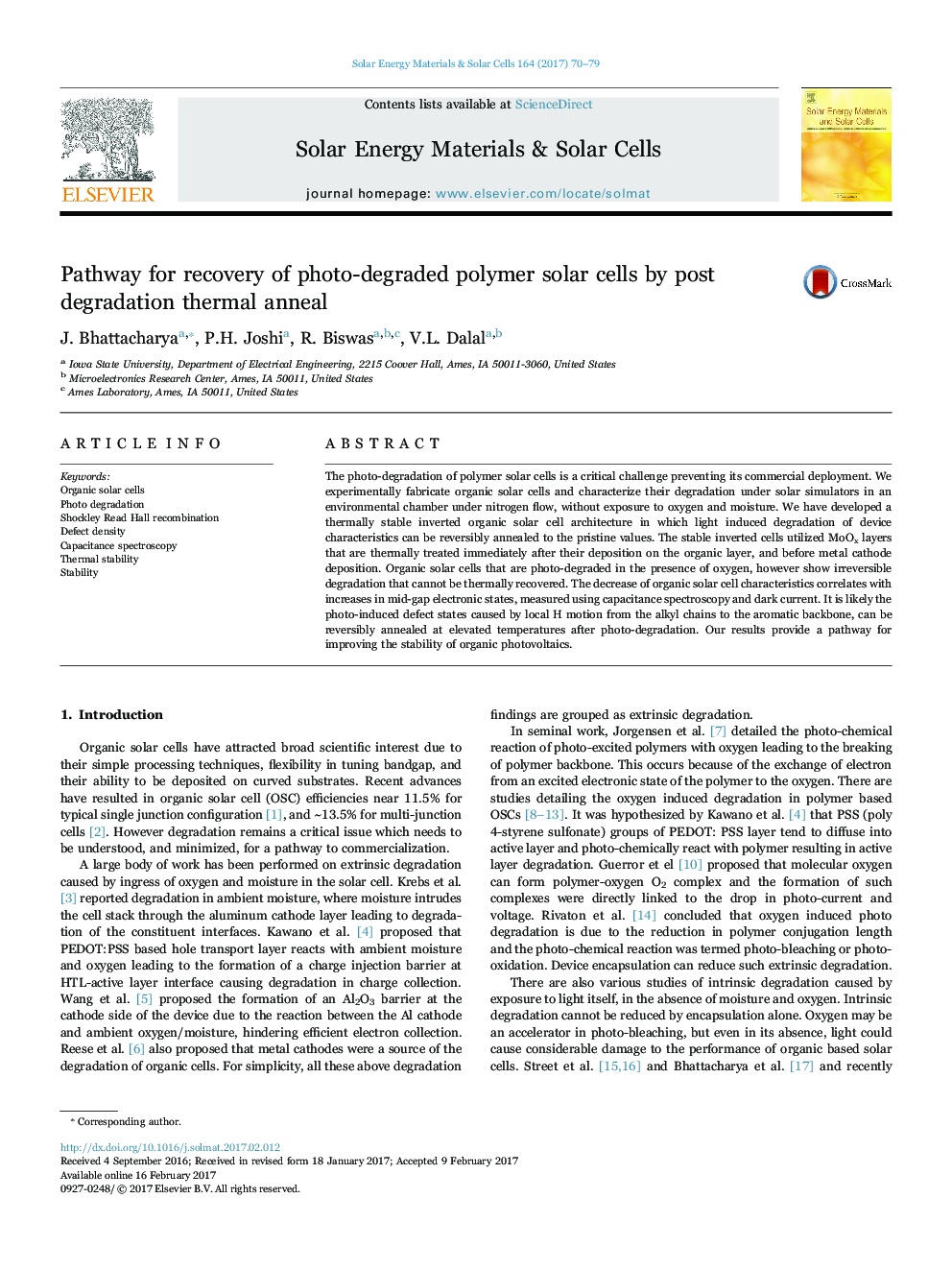| Article ID | Journal | Published Year | Pages | File Type |
|---|---|---|---|---|
| 6457102 | Solar Energy Materials and Solar Cells | 2017 | 10 Pages |
•Light Induced degradation in organic photovoltaics can be completely reversible.•Photo-degradation under inert atmosphere follow different dynamics compared to the photo-oxidation.•Visualizing complete recovery of photo degradation in organic solar cells require thermally stable contacts.•Thermal stability was obtained by thermally treating MoOx contact prior to the deposition of aluminum as anode.
The photo-degradation of polymer solar cells is a critical challenge preventing its commercial deployment. We experimentally fabricate organic solar cells and characterize their degradation under solar simulators in an environmental chamber under nitrogen flow, without exposure to oxygen and moisture. We have developed a thermally stable inverted organic solar cell architecture in which light induced degradation of device characteristics can be reversibly annealed to the pristine values. The stable inverted cells utilized MoOx layers that are thermally treated immediately after their deposition on the organic layer, and before metal cathode deposition. Organic solar cells that are photo-degraded in the presence of oxygen, however show irreversible degradation that cannot be thermally recovered. The decrease of organic solar cell characteristics correlates with increases in mid-gap electronic states, measured using capacitance spectroscopy and dark current. It is likely the photo-induced defect states caused by local H motion from the alkyl chains to the aromatic backbone, can be reversibly annealed at elevated temperatures after photo-degradation. Our results provide a pathway for improving the stability of organic photovoltaics.
